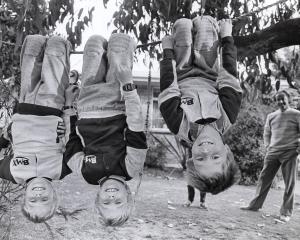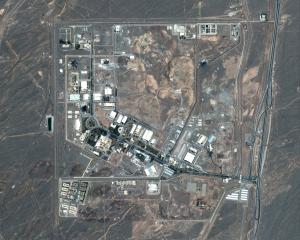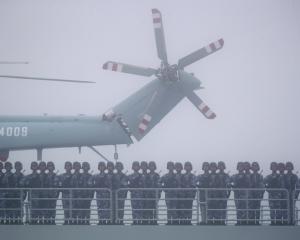When the troopship Waitemata steamed out through the Wellington Heads in July 1917, bound for Britain, it contained the usual assortment of soldiers for the time.
Most were designated the 28th Reinforcements, the latest batch to keep the numbers of fighting men up and the New Zealand Division at an efficient level on the Western Front.
There were some soldiers going back after recovering from wounds or sickness at home. There were infantrymen, gunners, Maori, troopers. There was also a small group of men slipped out of the country against their wishes and against their consciences. Among them was a name that would become widely known, Archibald Baxter, but not yet and not for a while.
He was with 13 other conscientious objectors who a frustrated and exasperated military establishment decided should be sent to precisely where they were opposed to going: the front.
The other men on the ship knew who the 14 men were and where they were going, but their family and friends did not. Baxter’s brothers Alexander and John were among the 14. All refused to serve and though they had been given serial numbers and assigned to units, they refused to wear uniforms and submit to military orders.
Army censorship and general wartime regulations ensured the public was told hardly anything to do with the war until the government decided the time was right so it was no surprise that the 14 objectors left in anonymity. Their appearances over the previous few months before courts and tribunals were given wide coverage but then, in July 1917, the coverage stopped. Nothing was known publicly until November when the labour movement newspaper, the Maoriland Worker, reported that eight of the men forcibly sent from New Zealand to Britain had been sent on to France. Archie Baxter was among the eight.
The paper’s editor was Harry Holland, future member of Parliament and leader of the Labour Party, and it is assumed the paper’s words were his: "It is not possible to describe in words the feelings of indignation which manifested itself in labour and religious circles when it became known that this action had been taken by the New Zealand Government."
To later generations, Baxter’s story became well known, in large measure because of his 1939 book We Will Not Cease, subtitled "The Autobiography of a Conscientious Objector". The book’s copyright was vested in Baxter’s wife, Millicent, a well-educated daughter of one of the founding professors of Canterbury College (later Canterbury University), John Macmillan Brown. Together, Baxter the Brighton farmer who did not go beyond primary school and his articulate wife told a tale of personal courage, government insensitivity, military bullying and blundering that stood in contrast to the generally glowing tales of New Zealand at war.
Holland had written a book, Armageddon or Calvary: The Conscientious Objectors of New Zealand and ‘the Process of Their Conversions’, in 1919, but it did not have, as Baxter’s did, the impact of personal experience. Millicent Macmillan Brown was attracted to her future husband when she read a letter from him to his parents which found its way into the papers. How it got past censors in the field and in Wellington is one of the mysteries of a war which still has its secrets.
"It is impossible for me to serve in the army," he wrote.
"I would a thousand times rather be put to death and I am sure you all believe that the stand I take is right.
"I have suffered to the limit of my endurance but I will never in my sane senses surrender to the evil power that has fixed its roots like a cancer on the world."
It was only gradually learnt, and even then not fully until Baxter’s book in 1939, that Baxter and the others were tortured physically and mentally by both New Zealand and British guards and that some senior officers fully encouraged such treatment as a deterrent example to others.
The extreme in the official punishment, as opposed to just random and unauthorised punches in the mouth or kicks in the ribs, was Field Punishment No 1. This was a formal method of discipline enshrined in military law; it was no leftover from a more brutal, barbarous age — its method and use had been reviewed during 1917 and approved for continued application. Baxter and three other conscientious objectors, Lawrence Joseph Kirwan, Mark Briggs and Harry Patton, were separately subjected to this instrument of the military penal code.
The practice was to tie them to a stake, their arms bound behind, for a couple of hours at a time, usually in an afternoon. They were not exposed directly to enemy fire, as some reports had it, but they were in punishment camps behind the lines and could have come under artillery fire. The punishment was carried out regardless of the weather and that for Baxter and Kirwan stopped only when a New Zealand sergeant saw them during a driving snowstorm and ordered they be freed.
Baxter described the punishment: "When I was taken off my hands were always black with congested blood. My hands were taken round behind the pole, tied together and pulled well up it, straining and cramping the muscles and forcing them into an unnatural position."
It was no consolation to Baxter that Field Punishment No 1 was inflicted on serving soldiers as well for a variety of military offences because it was regarded as a good deterrent and it had the added advantage that it did not take men away from the front.
Baxter’s war did not end when Field Punishment No 1 stopped. He was still subjected to abuse by provost guards and taken handcuffed to dangerous positions in the line. Eventually, illness and exhaustion took its toll to the extent he hardly knew who he was and certainly did not know where he was. He was shipped back to Britain, put in hospital where words such as "depression" and "mental illness" were used, but he slowly regained strength and health. He regained some faith in the human race too. One day, a New Zealand colonel approached him and said: "I know you have had objections to war and I know something of what you have suffered. I don’t want to ask any questions. I only want to assure you that you have my very best wishes."
Baxter admitted to being bowled over at being treated like a human being again.
Archibald Baxter married Millicent Macmillan Brown in 1921 and they bought a farm at Kuri Bush, just down the road from the family farm on Scroggs Hill; James, one of their two sons, became the renowned poet James K. Baxter. Archibald Baxter died in 1970 and Millicent in 1984.
One of the other conscientious objectors, Mark Briggs, became a member of the Legislative Council, the upper house abolished in 1950, and was the only parliamentarian to vote against conscription in World War 2.
- Ron Palenski














